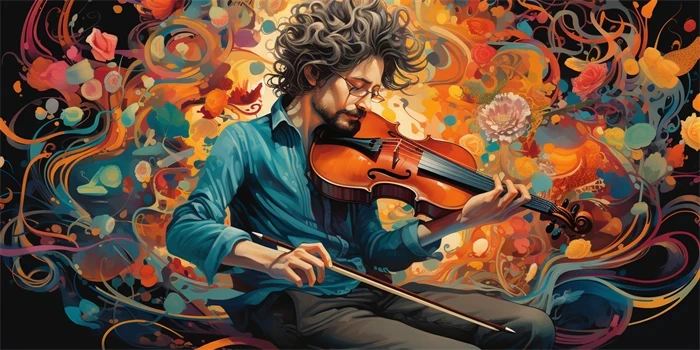Images play a crucial role in enhancing user experience on websites, but simply displaying static images may not be enough. By converting your stunning images into interactive HTML elements, you can elevate the overall user experience to new heights. In this article, we will explore various ways to achieve this and discuss the benefits it brings.

1. Image Mapping for Enhanced Navigation
Image mapping allows you to define specific clickable areas within an image, transforming it into a navigational tool. By strategically placing links or buttons on different parts of an image, you can create a visually appealing and intuitive way for users to explore your website. This technique is particularly useful for interactive maps, infographics, or product showcases.
Some popular tools for image mapping include Adobe Dreamweaver and online services like Image-Map.com. These tools provide an easy-to-use interface for defining the clickable areas and generating the necessary HTML code.
2. Image Sliders and Carousels
If you have a series of captivating images, why not turn them into an interactive slideshow? Image sliders and carousels allow you to showcase multiple images in a dynamic and engaging manner. Users can manually navigate through the images or set them to transition automatically.
Several libraries such as Slick and Owl Carousel offer pre-built solutions for creating image sliders with minimal coding. These libraries provide customizable options for transition effects, navigation controls, and responsive layouts.
3. Image Zoom and Magnification
When presenting high-resolution images or product details, enabling image zooming or magnification can greatly enhance the user experience. Users can explore the finer details of an image by hovering or clicking, immersing themselves in the visual content.
For example, the popular JavaScript library called elevateZoom.js enables smooth image zooming functionalities. By integrating this library into your website, you can provide visitors with a closer and more interactive look at your images.
4. Image Galleries with Lightbox Effect
Creating an image gallery with a lightbox effect allows users to view images in a larger format without leaving the current page. When a thumbnail is clicked, the image expands in a modal window, providing a distraction-free and immersive experience.
Tools like Magnific Popup and Responsive Lightbox offer easy integration of this feature into your website. These libraries also provide options for customization, such as transition effects, captions, and responsive designs.
5. Image-Related Interactive Quizzes or Surveys
Please note that this point could be expanded to two or more paragraphs or have bullet points.
Integrating interactive quizzes or surveys into your images can be a creative way to engage users. For example, you can use an image of a map and ask users to identify specific locations. This not only presents information in an interactive manner but also encourages active participation and increases user retention.
Platforms like Typeform or SurveyMonkey offer user-friendly interfaces for creating interactive quizzes and surveys. These tools allow you to embed images and define different types of questions, making the entire process seamless.
6. Augmented Reality Interactions
Augmented Reality (AR) is an innovative technology that overlays digital content onto the real world. By combining images with AR interactions, you can create a highly immersive experience for users. For example, users can view how furniture would look in their own space or try on virtual clothes.
To implement AR interactions, you can consider using platforms like Unity and AR.js. These tools provide functionalities to track markers or objects, detect gestures, and render virtual content in real-time.
7. Interactive Image Collages
Instead of displaying images individually, you can create interactive image collages to showcase multiple images in a visually appealing manner. By overlaying text or graphics on top of the images, you can create interactive hotspots that provide additional information or links.
Design tools like Canva and Fotor offer templates and features for creating eye-catching collages. With these tools, you can easily combine images, add text, and export the final collage as an interactive HTML element.
8. Infographics with Interactive Elements
Infographics are an effective way to present complex information in a visually appealing format. By adding interactive elements to infographics, such as hover effects or clickable icons, you can further engage users and enable them to explore the data at their own pace.
Tools like Piktochart and Visme provide drag-and-drop interfaces for creating interactive infographics. These platforms offer a wide range of templates, icons, and animations to transform static information into an interactive storytelling experience.
FAQs:
Q1: How can I convert my images into interactive HTML elements?
A1: There are several tools and libraries available, such as Adobe Dreamweaver, Image-Map.com, Slick, Owl Carousel, elevateZoom.js, Magnific Popup, Responsive Lightbox, Unity, AR.js, Canva, Fotor, Piktochart, and Visme, which can help you achieve this.
Q2: Can interactive images improve user engagement?
A2: Yes, interactive images provide a more immersive and engaging experience for users, encouraging them to spend more time on your website and increasing user satisfaction.
Q3: Do I need coding skills to create interactive images?
A3: While some level of coding knowledge may be helpful for customization, many tools and platforms offer user-friendly interfaces that require little to no coding expertise.
References:
Image-Map.com – An online image mapping tool that enables you to create clickable areas within an image.
Slick – A responsive carousel jQuery plugin for creating image sliders.
elevateZoom.js – A jQuery plugin that allows image zooming and magnification.


